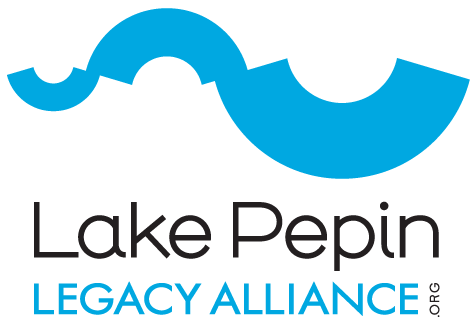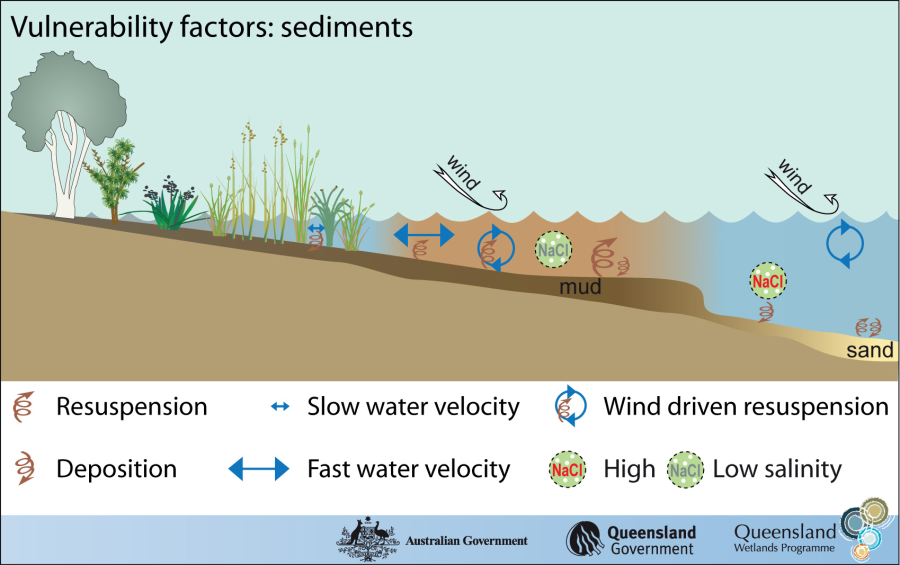Upper Lake Pepin is impaired for turbidity or “cloudy” water that results from sediment suspended in the water column. Water turbidity reduces light penetration, which is needed for healthy vegetation to take root and grow. Without healthy vegetation, the ecological impacts reverberate across the entire food chain: invertebrate and zooplankton populations decrease; fish communities shift to more bottom-feeding species; and waterfowl leave for areas with more food and better habitat.
In a cycle of negative feedback loops, many of these ecological changes actually reinforce greater turbidity. Without rooted vegetation, sediment is less secure and more vulnerable to resuspension. The influx of bottom-feeding fish, like common carp, contributes to greater physical disturbance of sediment. In areas with decreasing water depths, sediment is prone to greater resuspension from wind and waves.
To address Lake Pepin’s turbidity impairment, the Minnesota Pollution Control Agency (MPCA) outlines a management plan to reduce sediment input, but also break the cycle of sediment resuspension, referred to as the “internal sediment load”. The MPCA promotes, “reducing internal loads of sediment caused by wind and wave action through island-building and other river management practices” (South Metro Mississippi River TSS TMDL).
This strategy is congruent with the current habitat restoration project planned for upper Lake Pepin—except it uses peninsula extensions instead of islands.
This graphic shows how fine sediments, flowing water, and wind contribute to greater sediment resuspension (AKA Turbidity). The salinity is more important for saltwater ecosystems.
—
This blog post was published in the Red Wing Republican Eagle as “Our River, Our Lake”, a weekly column provided by Lake Pepin Legacy Alliance. Publication date: February 9-10.


